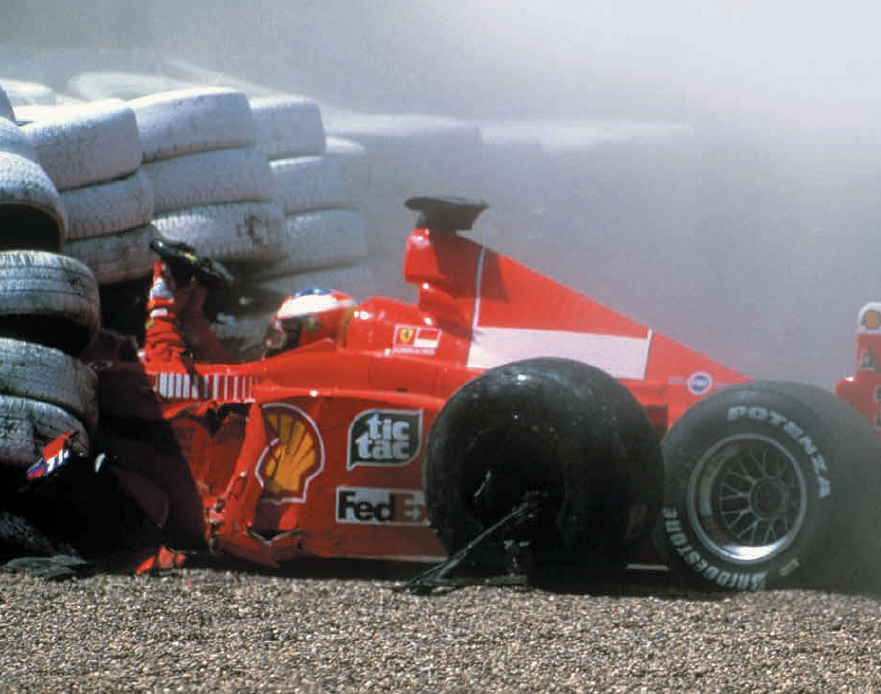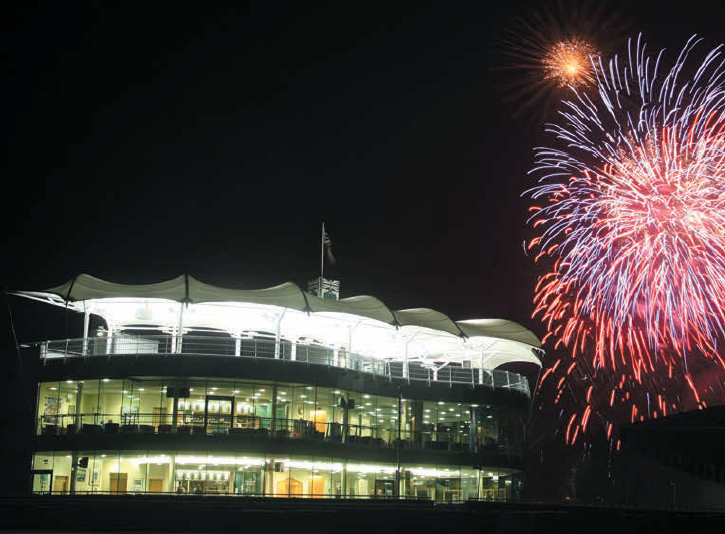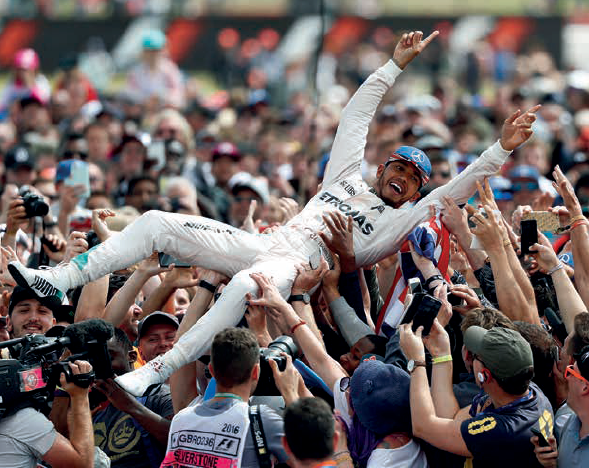Silverstone
The home of British motor racing (2nd edition)
- This item will be available in March 2025
FOREWORD BY DAVID COULTHARD
I was delighted to be asked to write the Foreword for this book because not only does Silverstone rank among my top four circuits in the world, alongside Monaco, Spa and Suzuka, but it also holds special memories for me, having twice won the British Grand Prix there.
As a Formula One driver, you always want to win your home Grand Prix, so those races were something pretty special and, as a result, Silverstone is close to my heart. Winning there was definitely one of the highlights of my career and something I know I will look back on with tremendous pride.
The circuit has a long and distinguished history: the very first race meeting held there in 1948 was a Grand Prix, and it continues today with its latest state-of-the-art facilities and the fact that it has secured the long-term future of the British Grand Prix.
Silverstone has changed a lot since I first raced there, and it still presents a great challenge for a driver, but the thing that sets it apart from other tracks to my mind is the atmosphere. Even as a young boy I could pick up on the atmosphere and the buzz that there was around the British drivers. British fans are very supportive of the home drivers, and when you see all the flags and know that they are for you, it’s fantastic. To be honest though, British spectators are always really knowledgeable and appreciative of the sport, regardless of the nationality of the drivers.
I always loved the atmosphere at Silverstone and made a point of staying in my motorhome on the campsite at Grand Prix time. There’s a real festival feeling about the place, because once the race has finished everyone hangs around and, if it’s a fine summer’s day, you can sit out on the grass having a beer and a burger and it’s a great way to round off the weekend.
Silverstone and the British Racing Drivers’ Club don’t always get enough credit for the levels of investment they put back into the circuit, not only to improve the actual track layout, but also the facilities for the fans.
This book has been written by carefully researching the archives of the BRDC, and talking to people who have worked and raced at Silverstone over the years. It covers every significant event in the circuit’s history, from its early days as a disused World War Two airfield, right up to its latest incarnation as a world-class circuit.
Silverstone certainly deserves the title ‘the home of British motor racing’ and I think that this book shows just why that is.
AUTHOR’S INTRODUCTION
In 2024 I attended my 53rd British Grand Prix. It had been an unbroken run until Covid intervened in 2020. Admittedly, only 44 of those home Grands Prix were held at Silverstone, the other nine dating back to the days when the race alternated between there and Brands Hatch in Kent.
When I first visited in 1973, Silverstone was one of the fastest tracks on the Grand Prix calendar, second only to Monza in Italy. That was Silverstone’s trademark – a fast, swooping circuit, and in 1985 Keke Rosberg set the first 160mph-average lap during qualifying for that year’s Grand Prix. Woodcote was the corner that sorted the men from the boys, and one of the iconic images from the track is of the late Ronnie Peterson sliding through the corner on the absolute limit of adhesion in his JPS Lotus-Ford 72E during qualifying for the 1973 British Grand Prix.
In those days it was still very easy to see the track’s origins as a World War II airfield (from which Wellington bombers used to operate). It was flat, largely featureless, and the wind blew across it mercilessly at times. The huge runways were still visible and easily identified for what they were. Look at Silverstone today though and it is almost impossible to picture its earlier incarnation. The line of those runways is largely still there, but they have become camouflaged by the myriad track configurations and infrastructure that has sprung up, particularly in recent years. That wind still blows across it though!
In 2010 the track layout was modified considerably, while grandstands and spectator banks were raised to improve the view. The following year the new Wing pits and paddock complex was completed, and the start line moved to its new home between Club and Abbey. Since then, the Hilton Garden Inn Hotel, the Silverstone Museum, Escapade and the new International Kart Track have helped complete the circuit’s transformation from wartime airfield to 21st century state-of-the-art facility.
While researching the first edition of this book I spent many hours – no, make that days, which became weeks – immersed in the archives of the British Racing Drivers’ Club, which in those days was housed in the old farmhouse, once occupied by legendary track manager and later chairman of Silverstone Circuits, Jimmy Brown and his family, on the inside of the circuit near Abbey Corner. Sitting in the conservatory or the library there, it was very easy to be distracted each day by the sound of racing engines as test or track days took place on the circuit. The BRDC kindly made the accommodation at the farmhouse available to me, and the Pat Fairfield room, overlooking Abbey Corner, became almost a second home.
For this second edition, I didn’t need to consult the archives so much, since all the leading figures were available to speak to first-hand, and people such as Silverstone CEO Stuart Pringle and BRDC chairmen past and present, John Grant and Peter Digby, agreed to be interviewed at length, making my task of assimilating information considerably easier. As for access to race reports in contemporary magazines, Dick Crosthwaite, of Crosthwaite and Gardiner fame, kindly made his extensive library available to me whenever I wished.
It was partway through my initial research, though, that my heart sank. I came across an article in the October 1957 issue of Motor Sport magazine entitled ‘Pity the unhappy historian’. It detailed different accounts from unnamed publications of the same event, all with differing reasons why, for example, a driver had retired, or contradicting reports of the race order at the end of the first lap. A similar column in the August 1968 issue, bemoaning the misreporting in five journals of the grid for that year’s French Grand Prix, only increased my concerns. I mention this by way of apologising for any errors that may have crept into the accounts of events in this book – memories can be unreliable, but so too can contemporary reports.
In 2013, when the first edition of this book was published, Alain Prost had won more Grands Prix at the circuit than any other driver, with five victories. Lewis Hamilton, in comparison, had a single Silverstone Grand Prix victory to his name, in 2008. Since then, he has almost dominated at the circuit, in 2024 scoring a record ninth British Grand Prix victory.
There is so much history – both on and off track – associated with Silverstone that it has been difficult to fit it all in, but I can honestly say that it has been a privilege and an education to write the history of the home of British motor racing.
• Early days: a wartime airfield, the Royal Automobile Club’s search for a motorsport venue, the first RAC Grand Prix of 1948.
• Subsequent Silverstone history told decade-by-decade: track changes, commercial developments, politics.
• Year-by-year highlights and landmarks: club events as well as the big races; memorable moments, highs and lows.
• The people: drivers, personalities, commentators.
• Packed with first-hand interview content from significant people in Silverstone’s history.
• Contains a wealth of historic photographs, many in colour.
• Updated material includes an account of the protracted negotiations with Liberty Media over the contract to stage the British Grand Prix, management changes at the circuit and the selling of land to repay loans.
• The story is brought right up to date with the signing of a new ten-year Grand Prix contract in 2024, and the development of the Silverstone Museum along with other major new projects.
Format: 280x230mm
Hardback
Page extent: 352
Illustration: 402 photographs, including colour
We deliver to addresses throughout the world.
UK Mainland delivery costs (under 2kg) by Royal Mail £5.00.
Books will normally be shipped within two working days of order. Estimated delivery times post shipment. UK: Up to 5 working days. Europe, Northern Ireland and Highlands and Islands: Up to 8 days. USA: Up to 12 days
IMPORTANT NOTICE FOR EU CUSTOMERS: Delivered Duty Unpaid (DDU) means that customers are responsible for paying the destination country's customs charges, duties. Regrettably parcels will sometimes be held by customs until any outstanding payments are made. Any payments not received may result in courier returning or in some cases destroying your books.
Unwanted products can be returned with the original packaging within 14 days of delivery. Returns will be at your own cost.
If you receive a faulty or damaged item please contact orders@evropublishing.com for return and replacement information.























